The state of crypto: 2025 market outlook
Key Drivers for Bitcoin and Digital Assets
The global cryptocurrency market is on the verge of a transformative year. Key trends such as increased institutional adoption, advances in blockchain scalability, and regulatory shifts are driving this expansion. For markets like Australia, these trends are particularly relevant due to high retail adoption, a progressive regulatory landscape, and growing institutional interest. By aligning with global developments while leveraging local strengths, Australian investors and businesses are uniquely positioned to benefit from the next wave of innovation in digital assets.
A Nation-State will adopt Bitcoin as a strategic reserve asset
Bitcoin’s (BTC) decentralised nature and its reputation as “digital gold” have made it an appealing reserve asset for nations seeking to hedge against inflation and diversify their reserve asset holdings. El Salvador’s adoption of Bitcoin as legal tender(1) and Bhutan’s integration of Bitcoin mining into its renewable energy framework highlight its potential to bolster national economies(2).
These examples reflect a broader trend where smaller nations use Bitcoin to address economic challenges.
Long-term Bitcoin holders have been steadily increasing since mid-2024,, indicating growing commitment from investors despite price volatility.
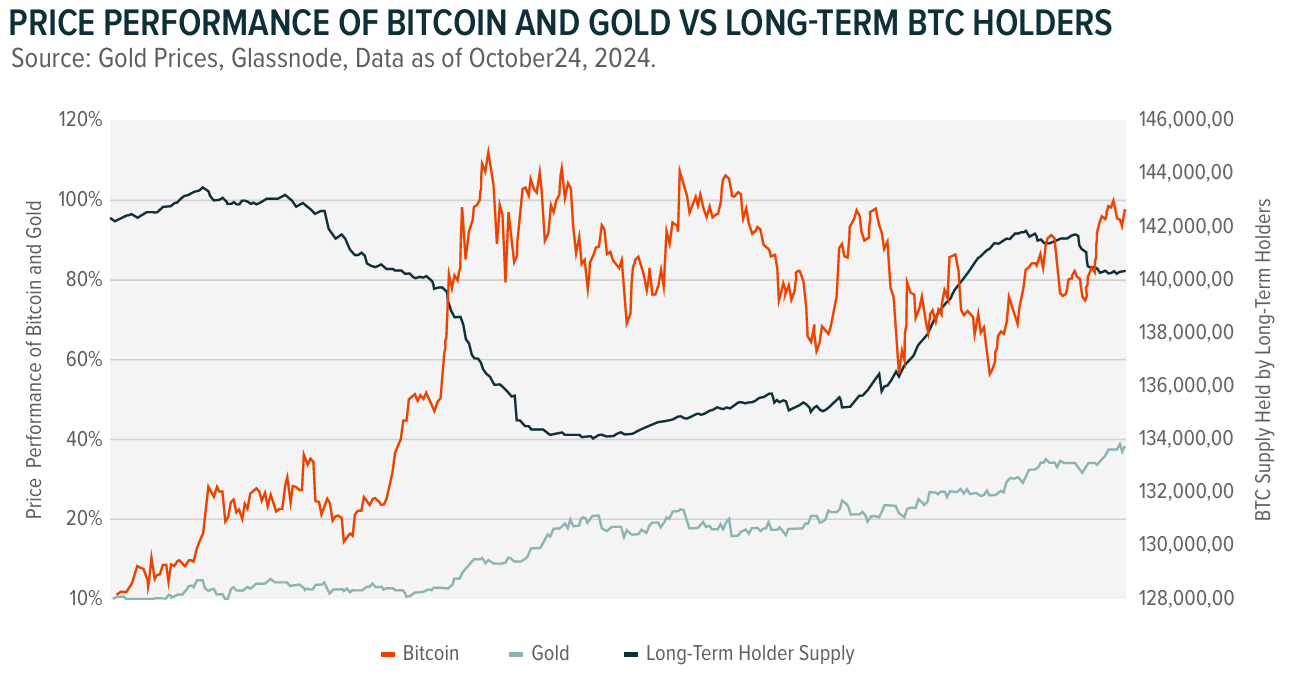
In Australia, while the adoption of Bitcoin as a reserve asset is not currently being pursued, blockchain innovation is becoming integral to financial development. The Reserve Bank of Australia (RBA) has piloted a wholesale Central Bank Digital Currency (CBDC), exploring blockchain’s potential for improving settlement efficiency(3).
Simultaneously, institutional interest in Bitcoin is growing, with superannuation funds like Rest Super publicly discussing plans to consider cryptocurrency investments(4). These developments underscore Bitcoin’s evolving role in Australia’s financial ecosystem and its appeal as a hedge against macroeconomic volatility.
Bitcoin’s Scalability Will Drive Total Value Locked to US$10 Billion
Bitcoin’s scalability has long been a challenge, but advancements such as the Lightning Network are addressing this limitation(5). These layer-2 solutions enable faster and cheaper transactions, unlocking Bitcoin’s broader potential as a payment method and a tool for decentralised finance (DeFi). By 2025, Bitcoin’s Total Value Locked (TVL) is projected to grow from US$1.7 billion to US$10 billion, driven by these technological advancements and their adoption across industries(6).
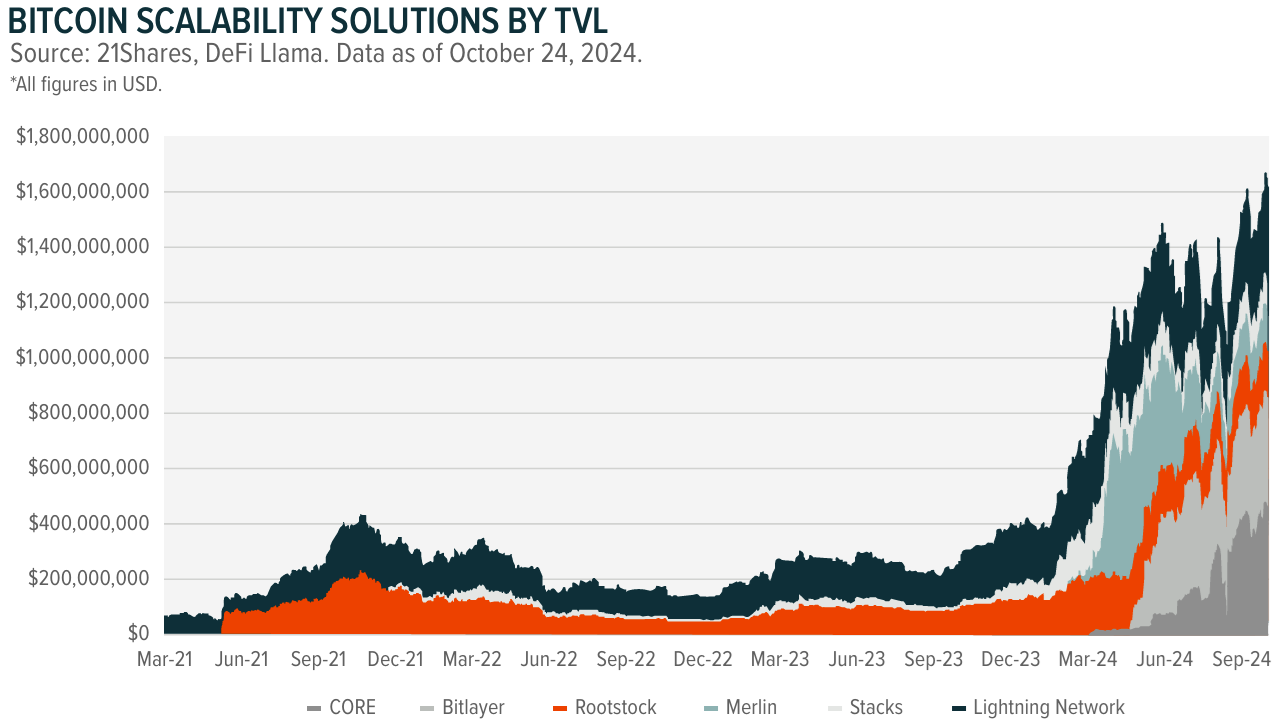
Australia, with approximately 23% of its population owning cryptocurrency(7), stands to benefit significantly from these improvements. The fintech sector, which has established itself as a global leader in cryptocurrency adoption, could leverage Bitcoin’s enhanced scalability for remittances and cross-border payments. Furthermore, businesses in sectors like e-commerce and financial services may adopt Bitcoin as a cost-effective alternative for transactions, further integrating it into the Australian economy.
Ethereum’s Revenue Renaissance in 2025
Ethereum is set for a significant revenue revival in 2025, underpinned by network upgrades like Proto-Danksharding and expanded layer-2 adoption(8). These advancements are expected to double Ethereum’s network revenue by improving scalability and reducing costs, thereby attracting more users and developers to the platform. Ethereum’s robust economic model and versatility position it as a key driver of blockchain-based innovation.
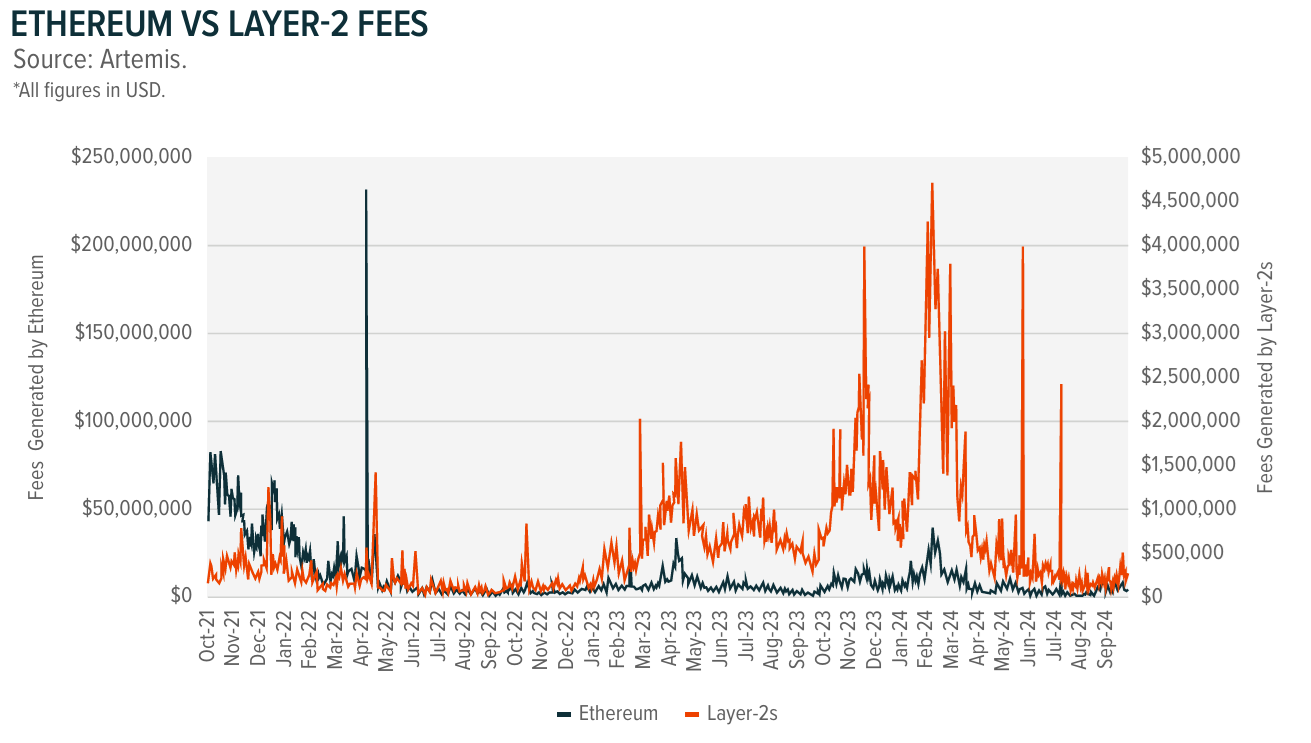
In Australia, Ethereum’s applications span various industries. Developers are using its infrastructure to create DeFi platforms, tokenisation solutions, and smart contract-based services(9). Initiatives like the National Blockchain Roadmap further align with Ethereum’s capabilities, showcasing the Australian government’s commitment to fostering blockchain innovation(10). As these developments unfold, Ethereum’s influence in Australia’s blockchain ecosystem is expected to grow, attracting more investment and talent to the sector.
ETPs to Drive Institutional Adoption Beyond US$250 Billion
Exchange-Traded Products (ETPs) have become a cornerstone of institutional cryptocurrency adoption, offering investors a regulated and accessible avenue to gain exposure to digital assets. The global crypto ETP market surpassed US$100 billion in assets under management (AUM) in 2024 and is projected to exceed US$250 billion by 2025(11). This growth is driven by rising institutional interest, improved regulatory clarity, and the success of spot Bitcoin Exchange-Traded Funds (ETFs) in key markets.
Despite potential influences from M2 money supply, inflation, and market accessibility, Bitcoin ETFs have undeniably outperformed Gold ETFs in demand during their first year of trading.
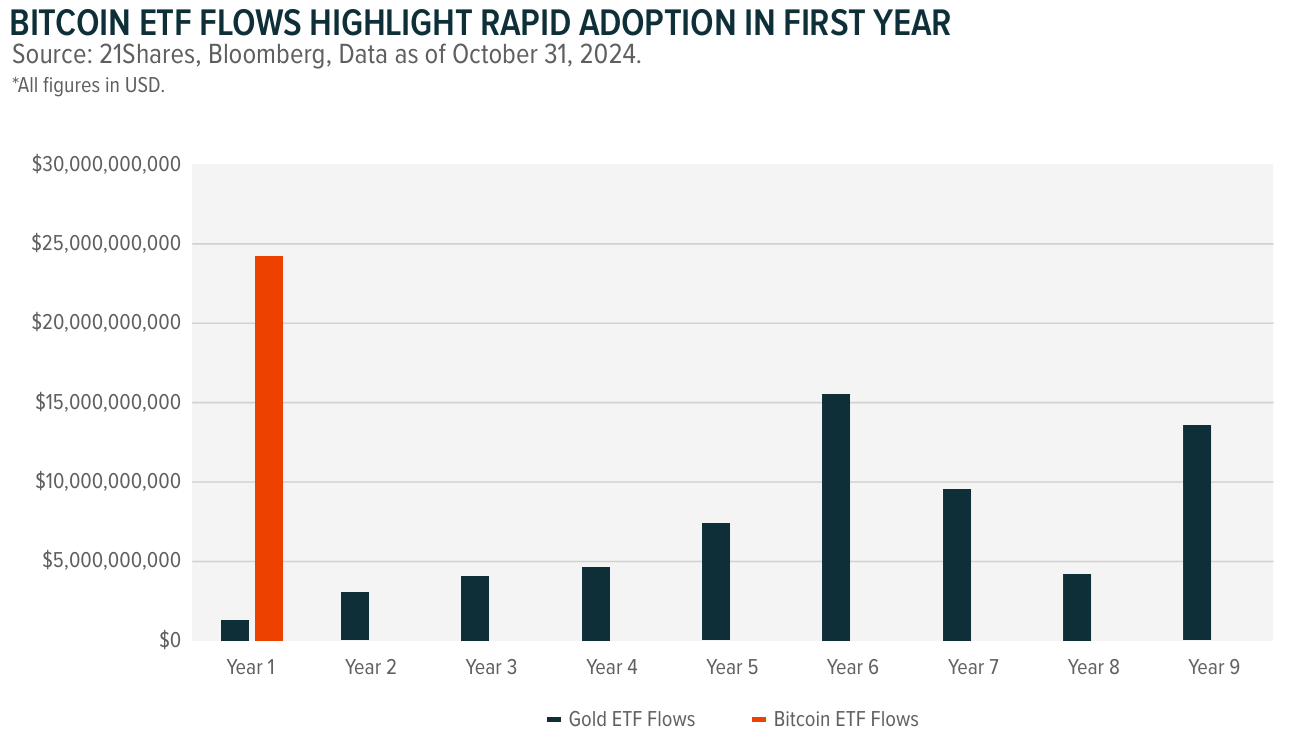
In Australia, the introduction of crypto-focused ETPs on platforms like Cboe has provided retail and institutional investors with new investment opportunities(12). Younger Australians, with a 31% crypto adoption rate(13), are among the primary drivers of demand for these products. Meanwhile, institutions are gradually incorporating digital assets into their portfolios as regulations continue to mature. These trends highlight ETPs’ potential to bridge the gap between traditional finance and the rapidly evolving cryptocurrency market.
Rethinking Retail Crypto Bans with Investor Protections
Globally, regulators are revisiting restrictive crypto policies, with enhanced investor protections playing a key role in fostering broader adoption. Measures to address risks such as fraud and volatility are reshaping the regulatory landscape, enabling safer participation in digital asset markets.
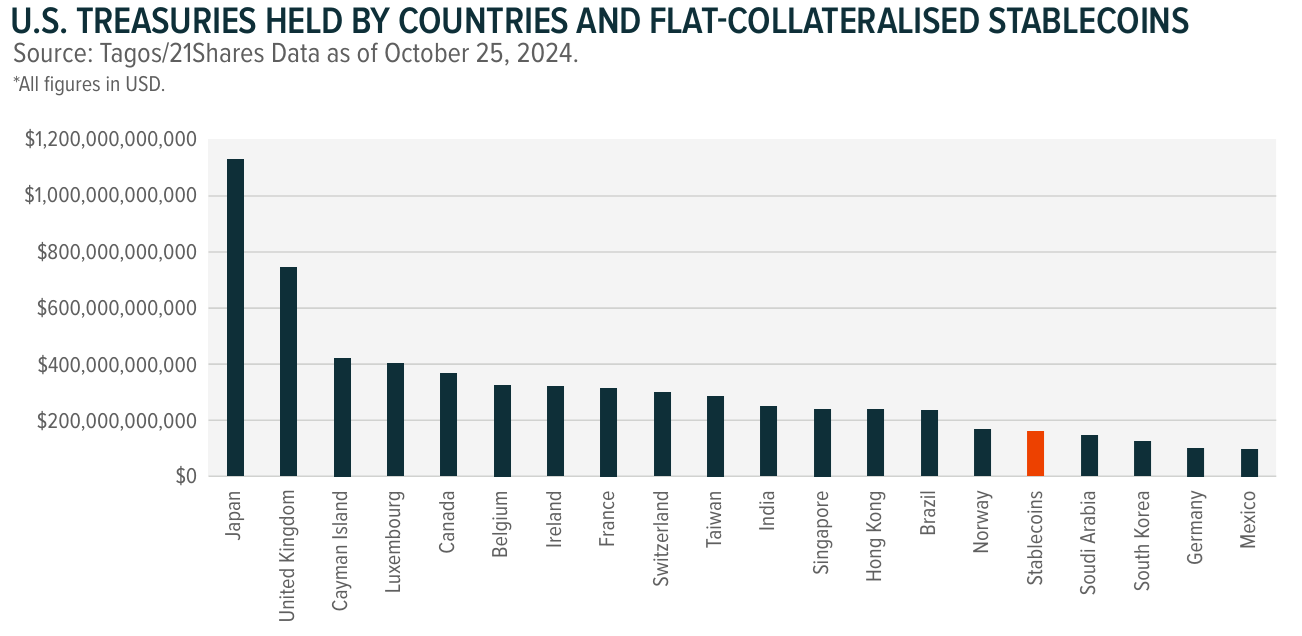
In Australia, the Australian Securities and Investments Commission (ASIC) has taken a proactive stance on regulating cryptocurrencies(14). Its focus on stricter oversight of exchanges and clear guidance for self-managed super funds (SMSFs) investing in crypto highlights its commitment to balancing innovation with investor safety(15). These steps are bolstering confidence in the market, positioning Australia as a secure yet forward-thinking environment for digital asset investment.
Conclusion
As the global cryptocurrency market matures, 2025 is shaping up to be a pivotal year for digital assets. Australia’s high adoption rates, innovative fintech ecosystem, and evolving regulatory framework position it as a key player in this global transformation. By aligning with emerging trends and leveraging local opportunities, Australian investors and businesses are well positioned to lead the charge in this rapidly evolving landscape, capitalising on the immense potential of digital assets.


3 topics
2 stocks mentioned
2 funds mentioned

